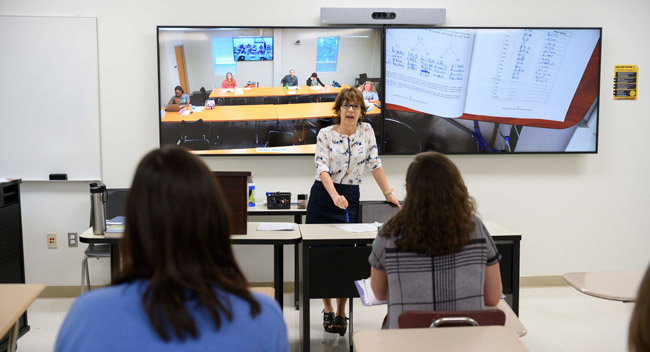Site-synchronous Classrooms Connect the Three Campuses
Georgia Southern University is showing that the distance between its three campuses is just a number for students. After a pilot program of three site-synchronous classrooms last spring, the University expanded it to 12 more for the fall semester. These classrooms use state-of-the-art technology to connect students to a class being taught on another campus.

The classes taught in this synchronous learning environment still bring students together with either the instructor or a teaching assistant in the physical classroom on their primary campuses. The site-synchronous class maintains the traditional face-to-face atmosphere with everything happening in real time, allowing for more natural discussion.
“Site-synchronous classes will become more common at Georgia Southern University allowing our faculty to deliver their courses to broader audiences with greater impact on student learning,” said Provost and Vice President for Academic Affairs Carl Reiber, Ph.D. “The piloted program was very well received by both students and faculty in the spring and we look forward to seeing this new delivery mode evolve into the future.”
Associate Professor of Literature Dustin Anderson, Ph.D., said the discussion-based format, combined with the campuses coming together, affords him and the students new opportunities.
“My favorite part about the site-synchronous classroom is that I don’t have to say ‘My students in Statesboro, my students in Hinesville or my students at Armstrong;’ I just have my students,” he said. “Because the classes are synchronous in the way the students meet, they really are just students rather than students from a specific campus, and that’s something that I and the students in the class really appreciate.”
